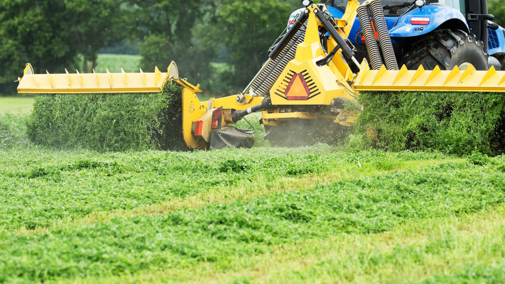Spring Flash Grazing
As pastures green up this spring, there may be an opportunity for producers to get some early forage and manage weeds by flash grazing. This can be particularly beneficial for early weeds like cheatgrass or downy brome. Especially problematic in the western parts of the state, cheatgrass greens up early, outcompete native species, and create fine fuels that increase wildfire risk.
Targeted flash grazing — short-duration, high-intensity grazing — can suppress cheatgrass if timed right. The best window is during the elongation phase, just before seed set. This is when animals prefer it, nutritional value is fairly high, before it robs your pastures of moisture and nutrients, and most importantly, before it reseeds itself for the next year.
Flash grazing doesn’t have to be limited to cheatgrass. In eastern Nebraska, pastures hit by drought last year can expect a flush of spring and summer weeds. Flash grazing offers a chance to control those weeds while providing valuable early forage — especially if you're delaying full pasture turnout to allow for regrowth.
Similarly, in native pastures being invaded by cool season-introduced species like smooth brome and Kentucky bluegrass, flash grazing can be a useful tool. Turn out early, before warm-season species begin their growth (before late May) and graze hard. The cool-season grasses will be targeted, and warm season natives will have a chance to better compete for resources later.
Strategic spring grazing won’t solve every weed problem, but it can jumpstart your pasture’s productivity.
Double Cropping Forages
There are many producers looking at ways to grow more forage for hay or pasture. Double cropping annual forages on irrigated cropland can be an option. With timely and adequate moisture, this can also be successful dryland as well.
Successful double cropping of annual forages requires good planning and timely operations. A common combination includes a cool-season winter annual like rye, triticale or wheat that is currently being grazed or will be hayed in May or June, followed by the planting of a warm-season annual forage. Similarly, something like oats that was planted this spring is followed by a warm-season annual.
If grazing is planned as the primary use of the warm-season annual, then sudangrass or pearl millets are good choices. With adequate moisture, the summer annual grass will be ready to graze in 45 to 50 days and may last through September.
Another strategy is to plant the warm-season annual grasses first in mid- to late May. Graze portions of them out in August, then plant oats or turnips or both for late fall and winter grazing. When planting oats or any other cool-season for fall forage, remember that production will be reduced if planting is delayed into later August or early September.
Of course, adequate moisture or irrigation is needed for these options to produce both double crops. Thus, it is wise to have a nearby pasture where animals can be placed and fed temporarily if extra time is needed to grow sufficient forage for grazing.
Scheduling First Cutting
As spring temperatures rise across Nebraska, now’s the time to plan your first alfalfa cutting. Getting that first cut right is more important than many realize — it sets the pace for the entire season.
Waiting too long to harvest can lead to lower forage quality and delayed regrowth. That pushes your second cutting later into the summer, when heat and drought stress can limit yield. It can also throw off your third or even fourth cuttings, shortening the season and reducing total tons per acre.
On the flipside, cutting too early — before late bud stage — can hurt stand vigor and root reserves, especially in younger fields.
A good rule of thumb? Aim for 750 growing degree days from green-up and target the late bud to early bloom stage. Depending on the quality you are shooting for, this typically falls between late May and early June. Check field conditions closely, including weevil activity and stand health, and plan around weather windows to avoid rain damage.
Poor timing in May can cost you in July and August. Start planning now. Sharpen blades, check and service equipment, and communicate with custom harvesters early. A timely first cut sets the tone for the rest of your hay season.

